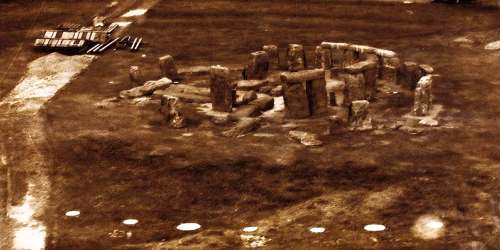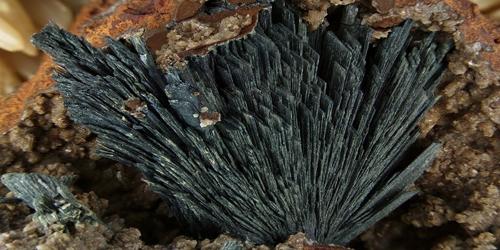Stonehenge is a prehistoric stone circle monument, cemetery, and archaeological site in Wiltshire, England, two miles (3 km) west of Amesbury. It consists of a ring of standing stones, each around 13 feet (4.0 m) high, seven feet (2.1 m) wide, and weighing around 25 tons. The stones are set within earthworks in the middle of the most dense complex of Neolithic and Bronze Age monuments in England, including several hundred tumuli (burial mounds). It was built in six stages between 3000 and 1520 BCE, during the transition from the Neolithic Period (New Stone Age) to the Bronze Age. The site and its surroundings were added to UNESCO’s list of World Heritage Sites in 1986.
One of the most famous landmarks in the United Kingdom, Stonehenge is regarded as a British cultural icon. It has been a legally protected Scheduled Ancient Monument since 1882 when legislation to protect historic monuments was first successfully introduced in Britain. Stonehenge is owned by the Crown and managed by English Heritage; the surrounding land is owned by the National Trust. ‘Stonehenge’ could have been a burial ground from its earliest beginnings. Deposits containing human bone date from as early as 3000 BC, when the ditch and bank were first dug, and continued for at least another 500 years.
As a prehistoric stone circle, it is unique because of its artificially shaped sarsen stones (blocks of Cenozoic silcrete), arranged in post-and-lintel formation, and because of the remote origin of its smaller bluestones (igneous and other rocks) from 100-150 miles (160-240 km) away, in South Wales. The name of the monument probably derives from the Saxon stan-hengen, meaning “stone hanging” or “gallows.”
Christopher Chippindale’s (a British archaeologist) Stonehenge Complete gives the derivation of the name Stonehenge as coming from the Old English words stān meaning “stone”, and either hencg meaning “hinge” (because the stone lintels hinge on the upright stones) or hen(c)en meaning “hang” or “gallows” or “instrument of torture” (though elsewhere in his book, Chippindale cites the “suspended stones” etymology). Like Stonehenge’s trilithons, medieval gallows consisted of two uprights with a lintel joining them, rather than the inverted L-shape more familiar today. The “henge” portion has given its name to a class of monuments known as henges. Archaeologists define henges as earthworks consisting of a circular banked enclosure with an internal ditch. As often happens in archaeological terminology, this is a holdover from antiquarian use. Because its bank is inside its ditch, Stonehenge is not truly a henge site.

(Post-World War I photograph of ‘Stonehenge’)
Some people think that Stonehenge was used to study the movements of the Sun and Moon. Other people think it was a place of healing. The ancient Britons believed that the Sun and Moon had a special power over their lives. It is very likely that they held special ceremonies at Stonehenge on Midsummer’s Day (the longest day of the year) and on Midwinter’s Day (the shortest day of the year).
‘Stonehenge’ has long been the subject of historical speculation, and ideas about the meaning and significance of the structure continued to develop in the 21st century. English antiquarian John Aubrey in the 17th century and his compatriot archaeologist William Stukeley in the 18th century both believed the structure to be a Druid temple. This idea has been rejected by more-recent scholars, however, as Stonehenge is now understood to have predated by some 2,000 years the Druids recorded by Julius Caesar. Many experts believe that ‘Stonehenge’ was used for funerals. They suggest that people carried the dead along the River Avon, and then walked up to Stonehenge in a grand procession. The most important funeral ceremony of the year was probably held on Midwinter’s Night at Stonehenge.
According to a team of British researchers led by Mike Parker Pearson of the University of Sheffield, Stonehenge may have been built as a symbol of “peace and unity”, indicated in part by the fact that at the time of its construction, Britain’s Neolithic people were experiencing a period of cultural unification. Researchers from the Royal College of Art in London have discovered that the monument’s bluestones possess “unusual acoustic properties” when struck they respond with a “loud clanging noise”. According to Paul Devereux, editor of the journal Time and Mind: The Journal of Archaeology, Consciousness, and Culture, this idea could explain why certain bluestones were hauled nearly 200 miles (320 km) a major technical accomplishment at the time.
There no certainties regarding the purpose of this site. The most consensual opinion is that this construction might has had multiple uses over the years, all of them cult-related. It’s considered a spiritual and sacred place for worship with a connection to astronomy. Some believe that it was a sort of healing place, based on the conditions of the bodies buried around it.
Information Source:
















